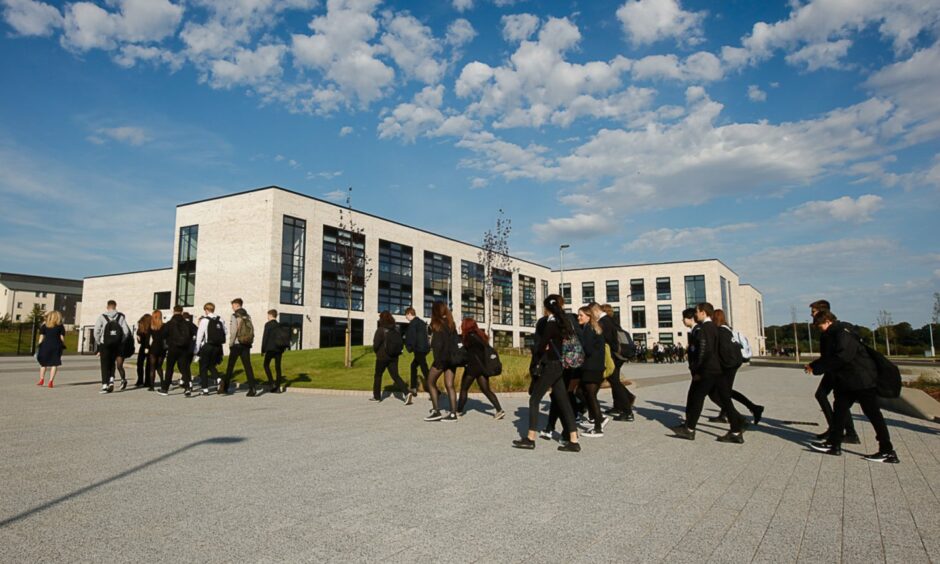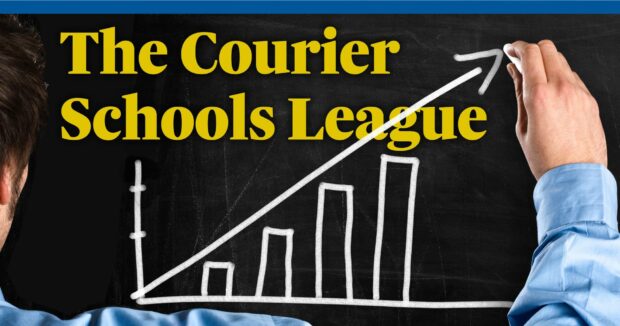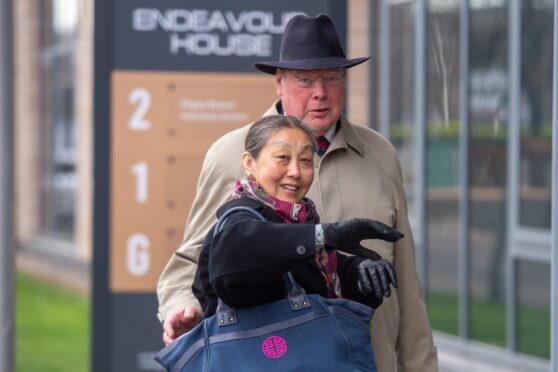Monifieth High School and Madras College are top placed for Tayside and Fife in the Scottish schools league table of 2022 ranked on Higher success.
Five or more Highers were achieved by 62% of pupils who left both the Angus and Fife schools during the 2020/21 school year.

They were closely followed by Kinross High School, in Perth and Kinross, and Dundee City’s Grove Academy.
You can find out where your local school ranked in The Courier Schools League for Tayside and Fife below.
At Kinross High School 57% of leavers achieved five or more Highers, while 56% did so at Grove Academy, in Broughty Ferry.
Scottish schools league table 2022: Tayside and Fife
(Virtual comparators and the deprivation index are explained below. Data not provided for Pitlochry High School)
A huge leap up our table from last year was made by Montrose Academy, climbing 21 places by increasing its percentage of leavers with five or more Highers from 24 to 41.
Similarly, Brechin High School went up 18 places, with 36% of leavers achieving the same, compared to 18% a year earlier.
Leaving school with five or more Highers has traditionally been regarded a benchmark of achievement as it is often an entry requirement for university.
Data on the qualifications gained by school leavers of every state school in Scotland is published annually by the Scottish Government.
Caution in drawing comparisons
However, ranking schools this way is controversial, as attainment levels tend to be lower among children living in more deprived areas.
This year’s results come with advice to take care in comparing them with those of previous years, as exams were cancelled for a second time last year due to the pandemic. Grades were instead awarded using an alternative certification model.
The Scottish Government states that attainment statistics will have been affected by the pandemic, including more S4 and S5 pupils than normal staying on in 2020, then leaving in 2021.
However, it insists the data provides an accurate reflection of attainment of school leavers.
What is a virtual comparator and the deprivation index?
A virtual comparator – which we have used as a secondary means of ranking schools when percentages are the same – puts the results of a school into context based on characteristics of its school leavers.
Percentages of pupils living in the most deprived areas in our table refer to those living in SIMD 1.
The Scottish Index of Multiple Deprivation shows where Scotland’s most deprived areas are, with those in SIMD 5, the least deprived.
Read more about this year’s attainment:
Exam success is a ‘narrow measure’ says Levenmouth Academy head teacher
How many pupils in your school go onto positive destinations?
Opinion: A child’s academic success should not be determined by their postcode












Conversation